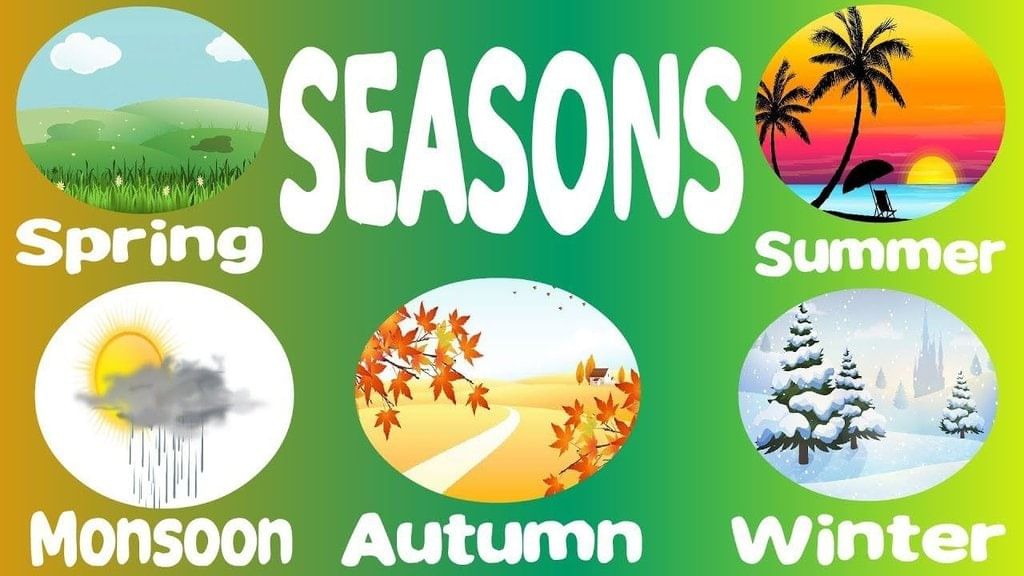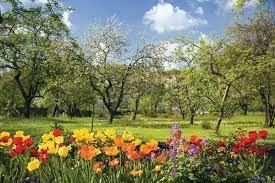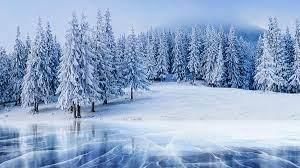Class 1 Exam > Class 1 Notes > General Knowledge for Young Learners > Seasons and their Characteristics
Seasons and their Characteristics | General Knowledge for Young Learners - Class 1 PDF Download
| Table of contents |

|
| Introduction |

|
| Spring |

|
| Summer |

|
| Autumn |

|
| Winter |

|
| Rainy |

|
| Seasons are not the Same Everywhere |

|
| What Causes the Seasons? |

|
Introduction
- Seasons are periods of the year with distinct weather conditions and day lengths.
- The seasons — winter, spring, summer, autumn and rainy — can vary significantly in characteristics and can prompt changes in the world around them. Here, we explore these five seasons in more detail.
- Attributes of the seasons may vary by location, but there are still broad definitions that cross most of the boundaries.

Spring

- In the spring, seeds take root and vegetation begins to grow. The weather is warmer and often wetter. Animals wake or return from warmer climates, often with newborns.
- Melting snow from the previous season, along with increased rainfall, can cause flooding along waterways, according to the Federal Emergency Management Agency (FEMA).
Summer

- In the summer, temperatures may increase to the hottest of the year. If they spike too high, heat waves or droughts may cause trouble for people, animals, and plants.
- For example, in the summer of 2003, the high temperatures claimed more than 30,000 lives, according to Encyclopedia Britannica. Rainfall may increase in some areas, as well. Others may receive less water, and forest fires may become more frequent.
Autumn

- In the autumn, or fall, temperatures cool again. Plants may begin to grow dormant. Animals might prepare themselves for the upcoming cold weather, storing food or traveling to warmer regions.
- Various cultures have celebrated bountiful harvests with annual festivals. Thanksgiving is a good example. "Thanksgiving in the United States is a historical commemoration but it has a spiritual dimension strongly associated with homecoming and giving praise for what has been bestowed upon us," Cristina De Rossi, an anthropologist at Barnet and Southgate College in London, told Live Science.
Winter

- Winter often brings a chill. Some areas may experience snow or ice, while others see only cold rain. Animals find ways to warm themselves and may have changed their appearance to adapt. "In a similar way to the Autumnal theme, Winter festivals celebrate the return of the light during a time of deepest physical darkness," said De Rossi.
- The Indian festival of Diwali, for example, which takes place between October and November, celebrates the triumph of righteousness, and light over darkness.
Rainy

- In the rainy season, monsoon winds bring heavy rainfall, replenishing water bodies and supporting plant growth. Farmers rely on this season to irrigate their crops. However, excessive rains can cause floods and waterlogging, affecting daily life.
- Many cultures celebrate the rains for their significance. In India, festivals like Teej mark the arrival of the monsoon and symbolize prosperity and joy.
Seasons are not the Same Everywhere
- The timing and characteristics of the seasons depend upon the location on Earth. Regions near the equator experience fairly constant temperatures throughout the year, with balmy winters barely discernible from warm summers.
- This is because it gets fairly constant light from the sun, due to its position on the outer curve of the Earth, according to the Atmospheric Radiation Measurement (ARM) program.
- For areas to the north and south, the seasons can change more significantly. People closer to the poles might experience icier, more frigid winters, while those closer to the equator might suffer hotter summers.
- Other factors can also affect the weather and temperature over the seasons; some areas experience dry summers as temperatures spike, while others might call summer their "wet season." A wet season is when a majority of a country or region's annual precipitation occurs, according to the Met Office.
- Mountainous regions might experience more snowfall than plains within the same latitude, while oceanfront property could see an increase in violent tropical storms as the weather shifts.
- The time of year a region experiences a season depends on whether it is in the northern or southern hemisphere. The Southern Hemisphere experiences winter while its northern neighbors encounter summer; the north sees the slow blossom of spring while the south brings in the autumn harvest.
What Causes the Seasons?
- The cycle of seasons is caused by Earth's tilt toward the sun. The planet rotates around an (invisible) axis. At different times during the year, the northern or southern axis is closer to the sun. During these times, the hemisphere tipped toward the star experiences summer, while the hemisphere tilted away from the sun experiences winter, according to the National Oceanic and Atmospheric Administration (NOAA).
- At other locations in Earth's annual journey, the axis is not tilted toward or away from the sun. During these times of the year, the hemispheres experience spring and autumn.
- The astronomical definition of the seasons relates to specific points in Earth's trip around the sun. The summer and winter solstice, the longest and shortest day of the year, occurs when Earth's axis is either closest or farthest from the sun.
- The summer solstice in the Northern Hemisphere occurs around June 21, the same day as the winter solstice in the Southern Hemisphere, according to NOAA. The south's summer solstice occurs around December 21, the winter solstice for the north. In both hemispheres, the summer solstice marks the first day of astronomical summer, while the winter solstice is considered the first day of astronomical winter.
- Equinoxes are another significant day during Earth's journey around the sun. On these days, the planet's axis is pointed parallel to the sun, rather than toward or away from it. Day and night during the equinoxes are supposed to be close to equal. The spring, or vernal, equinox for the northern hemisphere takes place around March 20, the same day as the south's autumnal equinox. The vernal equinox in the southern hemisphere occurs around September 20, when people in the north celebrate the autumnal equinox. The vernal equinox marks the first day of astronomical spring for a hemisphere, while the autumnal equinox ushers in the first day of fall.
- But changes in the weather often precede these significant points. The meteorological seasons focus on these changes, fitting the seasons to the three months that best usher them in. December to February marks meteorological winter in the Northern Hemisphere and meteorological summer in the Southern.
- March, April, and May are lauded as spring or autumn, depending on the location, while June through August are the months of summer for the north and winter for the south. September, October, and November conclude the cycle, ushering in fall in northern regions and spring in southern, according to NOAA.
- The seasons can bring a wide variety to the year for those locations that experience them in full. The weather in each one may allow people to engage in activities that they cannot perform in others — skiing in the winter, swimming in the summer. Each season brings with it its own potential dangers, but also its own particular brand of beauty.
The document Seasons and their Characteristics | General Knowledge for Young Learners - Class 1 is a part of the Class 1 Course General Knowledge for Young Learners.
All you need of Class 1 at this link: Class 1
|
52 videos|107 docs|40 tests
|
FAQs on Seasons and their Characteristics - General Knowledge for Young Learners - Class 1
| 1. What are the four main seasons? |  |
Ans. The four main seasons are Spring, Summer, Autumn, and Winter. Each season has its own unique characteristics and experiences.
| 2. Why do we have different seasons? |  |
Ans. Different seasons occur due to the tilt of the Earth's axis and its orbit around the Sun. This tilt causes different parts of the Earth to receive varying amounts of sunlight throughout the year, leading to seasonal changes.
| 3. How do seasons vary in different parts of the world? |  |
Ans. Seasons can vary greatly in different regions. For example, some places may experience only two seasons (wet and dry), while others may have distinct four seasons. The climate, latitude, and geography of a region influence its seasonal patterns.
| 4. What are the characteristics of each season? |  |
Ans.
- Spring: A time of growth and renewal, characterized by blooming flowers and warmer temperatures.
- Summer: The warmest season, often associated with long days, outdoor activities, and vacations.
- Autumn: A transitional season marked by falling leaves, cooler temperatures, and harvest time.
- Winter: The coldest season, characterized by snow, shorter days, and often a cozy atmosphere indoors.
| 5. What causes seasonal weather changes? |  |
Ans. Seasonal weather changes are primarily caused by the Earth's tilt and position relative to the Sun. As the Earth orbits the Sun, different areas receive different amounts of sunlight and warmth, resulting in the various weather patterns associated with each season.
Related Searches















